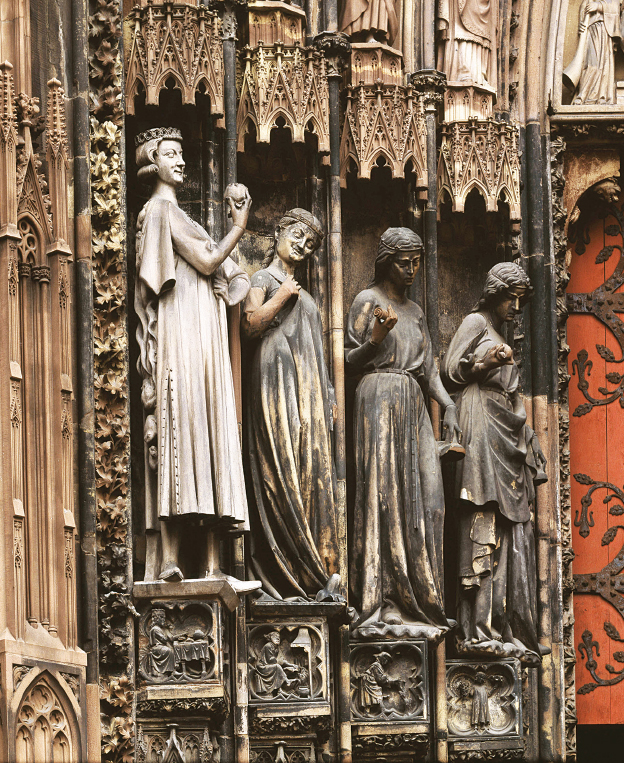Understanding Western Society
Printed Page 284
Rituals of Marriage and Birth
Increasing suspicion and hostility marked relations between religious groups throughout the Middle Ages, but there were also important similarities in the ways Christians, Jews, and Muslims understood and experienced their religions. In all three traditions, every major life transition was marked by a ceremony that included religious elements.
In Christian weddings, a priest’s blessing was often sought, though it was not essential to the marriage. Muslim weddings were also finalized by a contract between the bride and groom and were often overseen by a wedding official. Jewish weddings were guided by statements in Talmudic law that weddings were complete when the bride had entered the chuppah, which medieval Jewish authorities interpreted to mean a room in the groom’s house. In all three faiths, the wedding ceremony was followed by a wedding party.
Friends and family members had generally been part of the discussions, negotiations, and activities leading up to a marriage; marriage united two families and was far too important to leave up to two people alone. Among serfs, the manorial lord’s permission was often required, with a special fee required to obtain it. The involvement of family and friends in choosing one’s spouse might lead to conflict, but more often the wishes of the couple and their parents, kin, and community were quite similar: all hoped for marriages that provided economic security, honorable standing, and a good number of healthy children. The best marriages offered companionship, emotional support, and even love, but these were understood to grow out of the marriage, not necessarily precede it. The church forbade divorce, and even among non-
Most brides hoped to be pregnant soon after the wedding. Christian women hoping for children said special prayers to the Virgin Mary or her mother, Anne. Some wore amulets thought to increase fertility. Others repeated charms and verses, or, in desperate cases, went on pilgrimages to make special supplications. Muslim and Jewish women wore small cases with sacred verses or asked for blessings from religious leaders. Women continued these prayers and rituals throughout pregnancy and childbirth, often combining religious traditions with folk beliefs. Judaism, Christianity, and Islam all required women to remain separate from the community for a short time after childbirth and often had special ceremonies welcoming them back once this period was over.

Religious ceremonies also welcomed children into the community. Among Christian families, infants were baptized soon after they were born to ensure that they could enter Heaven. Midwives who delivered children who looked especially weak and sickly often baptized them in an emergency service. In normal baptisms, the women who had assisted the mother in the birth often carried the baby to church, where godparents vowed their support. Godparents were often close friends or relatives, but parents might also choose prominent villagers or even the local lord in the hope that he might later look favorably on the child and provide for him or her in some way.
Within Judaism, a boy was circumcised by a religious official and given his name in a ceremony in his eighth day of life. This brit milah, or “covenant of circumcision,” was viewed as a reminder of the covenant between God and Abraham described in Hebrew Scripture. Muslims also circumcised boys in a special ritual, though the timing varied from a few days after birth to adolescence.